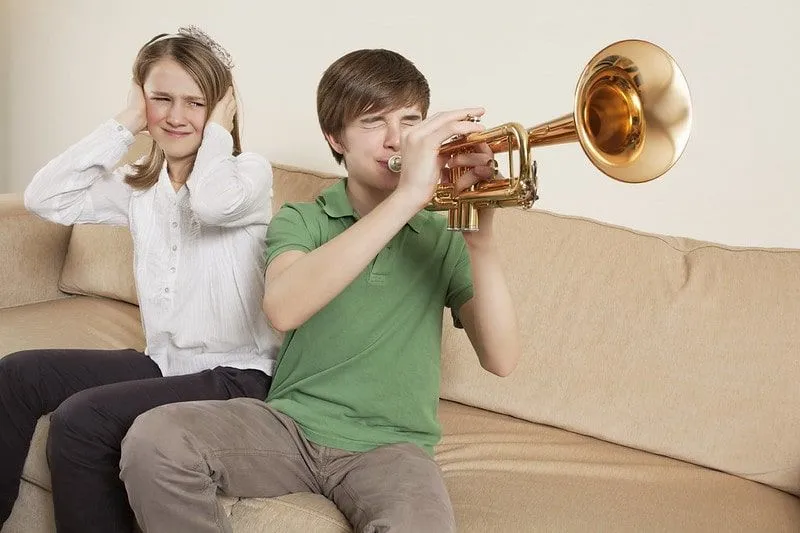FOR ALL AGES
Sounds are being made all around us all the time.
Whether it be music from your favourite singer, a fire engine siren or even a bell ringing, the things that we hear just like these noises are different sounds. If you're not too sure how to explain what sound exactly is, or maybe your child has started to learn about it in science lessons at school but they just need a bit more help understanding we can help.
We'll cover all the key things you need to know related to sound. Ready to listen up?
Sound is introduced as part of the national KS2 curriculum in Year 4, where children learn about how sound is made through vibrations and learn about volume and pitch, whilst their understanding of scientific inquiry is developed further in Years 5 and 6.
As we know, sounds are made around us all the time. It doesn't matter what types of sound or how different sounds may be from another, they are all made the same way.
Sounds are made through vibrations which are something that we cannot see with our eyes all the time, but we can hear when it travels to your ear.

When an object (like a bell) is shaken back and forth, this causes the object to start vibrating.
This causes the air (which is made of small particles) around it to also start vibrating.
As the air particles vibrate, move and knock into one another, this carries the sound and causes it to travel through the air as sound waves.
When they reach your ear, the waves travel into the ear until they reach the eardrum, causing it to also vibrate. This subsequently causes small bones in your ear to also vibrate.
These vibrations then continue to travel from your ear along the auditory nerve which sends a message to your brain to tell you that you can hear a sound.
Fun Fact: Sound has to travel through a medium (a substance or matter like air and water). So, you actually wouldn't be able to hear anything in outer space because there is no air for sound to travel through.
Well, volume means how quiet or loud a sound is. It is related to how strong the sound is. The more an object vibrates, the louder the sound it makes is.
Whereas, pitch means how high or low a sound is. How high or low pitch a sound is depends on the speed an object vibrates at. If it vibrates really fast, it creates a high pitched sound but if this is done at a slower rate, it makes a low pitched sound.

The distance you are from an object that is making a sound determines whether it is loud or quiet.
As you know, sounds are made when an object vibrates. These vibrations carry energy. The further away you are from a sound (like hearing someone singing), the less energy the sound waves are able to carry. This means that the vibrations travelling in the air become smaller.
So, as you move further away from a sound, the quieter the sound will become until no sound can be heard.
Still unsure? Think about the waves losing energy similar to someone becoming tired from running a lot.
As you run farther (or in this case the further the sound waves travel), the more tired someone becomes as they have less energy to run so they become slower- just like a sound!
Investigate! Get your kids to conduct their own mini scientific sound experiments to get them to understand more about the topic of sound.
Use materials like a tissue box along with rubber bands of different thicknesses to discover how the sounds they make differ. Wrap the rubber bands around the box to make a mini guitar, then try pulling them.
Questions to ask your kids:
Can you see them vibrate? How loud or quiet is the sound? Is it a high or low ? (The thickness of the band will change the pitch of the sound!)

With your child, play a fun clapping game to get them to understand how loud or quiet a sound can be.
One of you will need to close their eyes, while the other moves around the room, taking turns. The person who is moving needs to clap- you can decide how hard!
The person with their eyes closed has to describe how loud or quiet the sound of the clap is, and guess where the other person is in the room by pointing.
Take it in turns- you could even try this with different musical instruments, or even a song. Try to vary the distance from the person with their eyes closed to keep things interesting!
Sound: Made when an object moves back and forth quickly.
Vibrations: Made when something quickly moves back and forth.
Medium: A substance or matter like air which allows sound to travel through. Without a medium, sound can't travel!
Volume: How loud or quiet a sound is.
Pitch: How high or low a sound is.
Read The Disclaimer
At Kidadl we pride ourselves on offering families original ideas to make the most of time spent together at home or out and about, wherever you are in the world. We strive to recommend the very best things that are suggested by our community and are things we would do ourselves - our aim is to be the trusted friend to parents.
We try our very best, but cannot guarantee perfection. We will always aim to give you accurate information at the date of publication - however, information does change, so it’s important you do your own research, double-check and make the decision that is right for your family.
Kidadl provides inspiration to entertain and educate your children. We recognise that not all activities and ideas are appropriate and suitable for all children and families or in all circumstances. Our recommended activities are based on age but these are a guide. We recommend that these ideas are used as inspiration, that ideas are undertaken with appropriate adult supervision, and that each adult uses their own discretion and knowledge of their children to consider the safety and suitability.
Kidadl cannot accept liability for the execution of these ideas, and parental supervision is advised at all times, as safety is paramount. Anyone using the information provided by Kidadl does so at their own risk and we can not accept liability if things go wrong.
Kidadl is independent and to make our service free to you the reader we are supported by advertising.
We hope you love our recommendations for products and services! What we suggest is selected independently by the Kidadl team. If you purchase using the buy now button we may earn a small commission. This does not influence our choices. Please note: prices are correct and items are available at the time the article was published.
Kidadl has a number of affiliate partners that we work with including Amazon. Please note that Kidadl is a participant in the Amazon Services LLC Associates Program, an affiliate advertising program designed to provide a means for sites to earn advertising fees by advertising and linking to amazon.
We also link to other websites, but are not responsible for their content.
Was this article helpful?



Browse Category



We’ll send you tons of inspiration to help you find a hidden gem in your local area or plan a big day out.



Check your inbox for your latest news from us. You have subscribed to:
Remember that you can always manage your preferences or unsubscribe through the link at the foot of each newsletter.